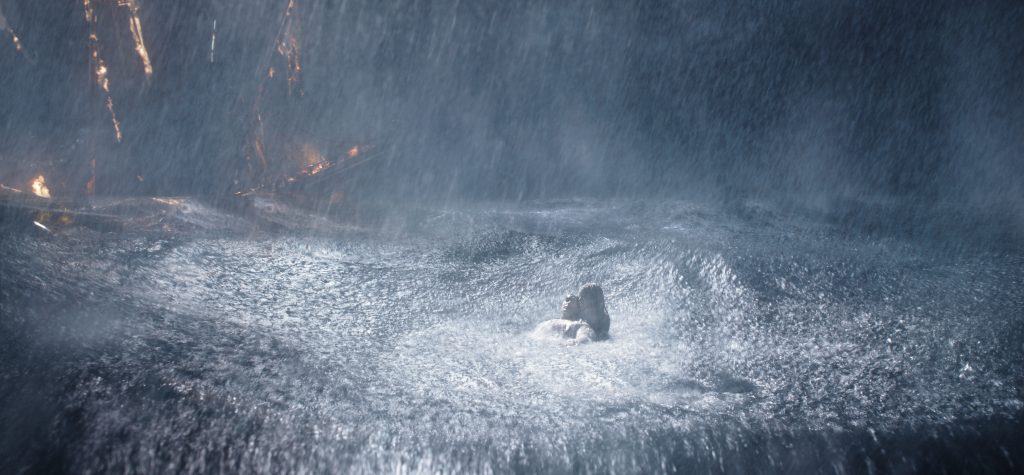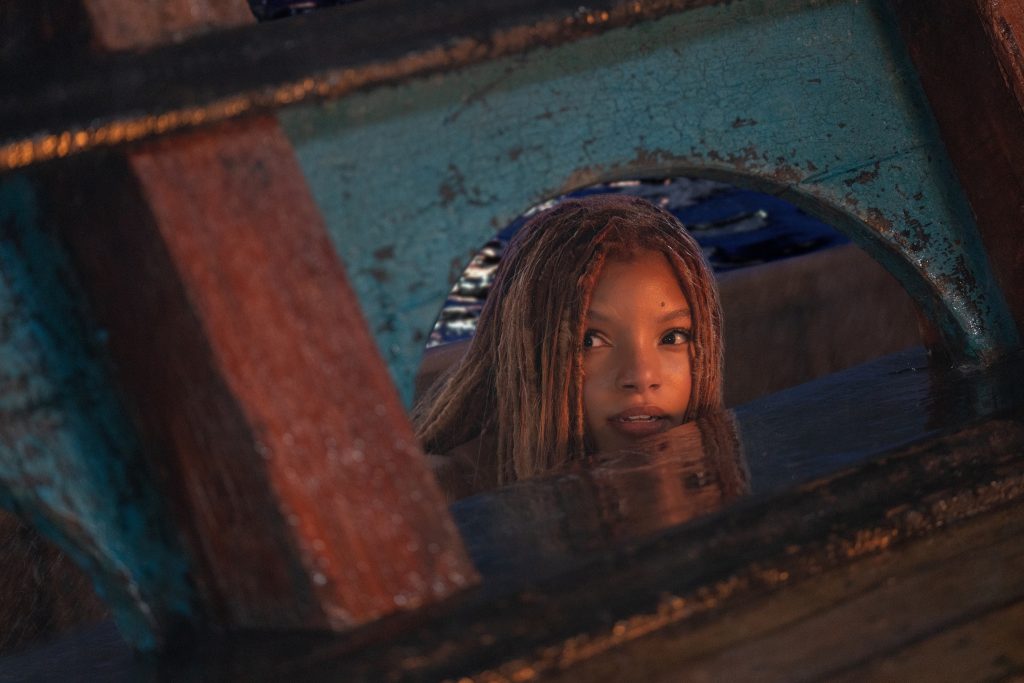REVIEW: The Little Mermaid sinks to the bottom of the ocean

Posted May 25, 2023 10:22 pm.
Cinema is a unique art because it combines many other forms of art. The staging of theater, the sound of music, and the special effects that can only be dreamed up by the dreamer. These are all important parts of cinema but a film can live without one of them if need be. The most important aspect of cinema, the one that cannot be forgotten, the one that must be utilized well in order for a film to work is lighting. Cinema is a visual art, we need to see it. And an optic nerve, just like a camera, needs light to see.

Halle Bailey and Jonah Hauer-King in the Little Mermaid, courtesy of Disney.
The Little Mermaid is not a film that forgot about its lighting. It’s a film that is very specific with the limited lighting it uses. Part of the reason is that a good chunk of this film takes place underwater. Ariel (played by Halle Bailey from Grown-ish) is a mermaid who yearns to connect with humans. She wants to go where they are, where the lighting is. Where she lives under the sea, there is minimal lighting. And the film’s purpose in having minimal lighting certainly isn’t to create realism. It is after all a film about a mermaid who has a friend that is a crab that speaks in a Jamaican accent (played by Daveed Diggs from Blindspotting).
The film’s reason for its minimal lighting is to cover up the special effects. It’s a common trick of the trade. If your special effects don’t look great, place it in a dark setting or obstruct it with something. For example, look at the final fight of Avengers: Engdame. While previous films in that franchise were able to show fight scenes in clear lighting, this film covers up its masses of armies with dust and destroyed rubble in a predominantly dark setting. It’s easier to miss the details that way.
The human eye struggles to perceive every detail of a moving image without lighting, and this film really wants to obstruct its fake-looking special effects. The best part of this film is easily the second act, in which our titular mermaid spends most of it above water in the daytime. The lighting is immaculate, because minimal special effects are needed here.
Obviously there’s a matter of suspending belief when watching a film about a mermaid. That’s part of why the original animated film worked so well, because it didn’t need to be realistic. It merely needed to tell a tale children could identify with while also showcasing some pretty images (and it does both excellently). We don’t look to recreation of reality in animation all the time, because it’s the creation of something new. But in this so called “live-action” film, there are many instances of CGI that look incredibly unrealistic. In a film like this where several characters are entirely CGI, it’s pretty important to make sure you do a good job.

Awkafina in the Little Mermaid, courtesy of Disney.
Even the film’s star isn’t immune to this mediocre CGI. Close-ups of Ariel underwater are clearly her against a flat background attempting to look like it exists in three dimensions, but anytime she swims she becomes a cartoon image. She doesn’t look like a human, much less a mermaid. She looks like an approximation of one.
Considering the film is predominantly made up of this lack of lighting for too many bad special effects, it’s quite a miracle that Bailey is able to turn in a tremendous performance. As a singer, her vocals are astoundingly incredible but where she truly succeeds is in immersing herself in this character. She plays this young woman with an endearing curiosity, a desire to learn. Her most powerful tools (excluding her voice obviously) are her eyes. They show a longing, a yearning to see what is in the light. Now that could be due to the fact this film is so dimly lit. Nonetheless, this seems like a beginning of a fruitful career for Bailey as an actress.

Halle Bailey in the Little Mermaid, courtesy of Disney.
Bailey is easily the film’s MVP, but there are entertaining performances from others. Especially Melissa McCarthy (from Bridesmaids) as the villainous Ursula, who’s clearly having fun eating up the ham in her lines. But nobody is putting as much work into this film as Bailey does.
Disney has spent several years cannibalizing its biggest successes in its portfolio for profit. It’s a lazy, yet all too common move of the film industry nowadays. The majority of these films range from mediocre to legitimately horrible, so it pleases to me say there is at least one genuinely great performance in this. This film gets a 2/5, and you can watch it in cinemas now.








